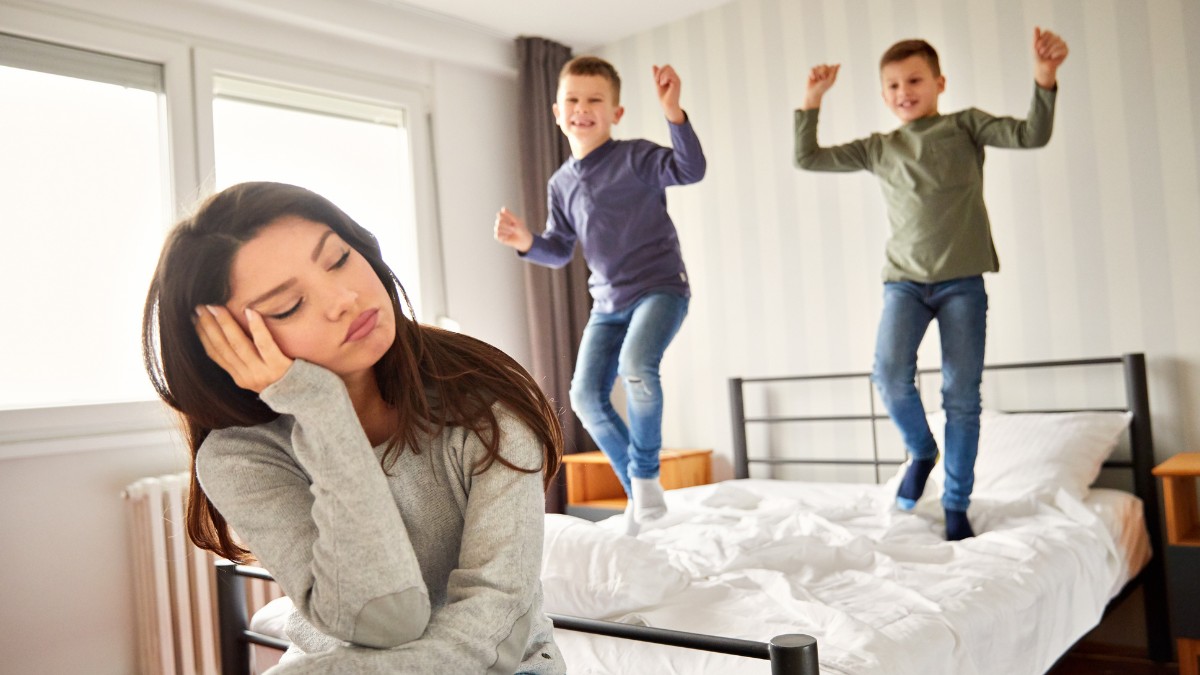
Key Points:
- Hyperactivity in autism can affect learning, social interactions, and daily functioning.
- Consistent routines, sensory supports, and evidence-based behavioral interventions help reduce excessive movement and impulsivity.
- Parents can work with professionals to develop tailored strategies for home, school, and community settings.
According to studies, up to 70% of autistic individuals may also experience symptoms of attention deficit hyperactivity disorder (ADHD). This hyperactivity in children with autism can be challenging, both for the child and the people around them.
While some level of energy is typical in all children, hyperactivity in autistic individuals often looks different—it’s more persistent, harder to redirect, and frequently tied to sensory processing differences.
In this article, we’ll go over what causes hyperactivity in autistic children, how to recognize the signs, and practical, compassionate strategies parents and educators can use to manage it. Whether you’re navigating mealtimes, classroom settings, or transitions between activities, understanding the “why” behind hyperactive behaviors is the first step toward effective support.
What is Hyperactivity in Autism?
Hyperactivity in autism refers to persistent, excessive movement and impulsive behaviors that interfere with attention, learning, or social functioning. These behaviors are not always intentional and often stem from sensory processing differences, difficulty with self-regulation, or co-occurring conditions like ADHD.
Unlike typical energy in young children, hyperactivity in children with autism tends to be harder to redirect and may include jumping, pacing, hand-flapping, or constant fidgeting. These behaviors can significantly impact daily life, making it difficult to complete tasks or participate in group settings.
Why Does Hyperactivity Occur in Autistic Children?
Hyperactivity is not simply about having “too much energy.” In autistic children, it often originates from a complex mix of neurological, sensory, and emotional factors. Understanding these root causes can help parents approach the issue with more empathy and effectiveness.
Many autistic individuals experience sensory processing issues that make them more reactive to their environment. A noisy room, bright lights, or itchy clothes might cause discomfort, and moving excessively can be a form of coping. Additionally, children with autism may have trouble with impulse control and transitions, which can appear as restlessness or hyperactive behavior. These outward behaviors often go hand in hand with deeper physical indicators—something we explore further in our article, Physical Signs and Symptoms of Autism Spectrum Disorder.
What are Common Signs of Hyperactivity in Autism?
Parents may notice several key behaviors that suggest their child is experiencing hyperactivity linked to autism. These signs can overlap with ADHD but may also stem from sensory needs or difficulties with emotional regulation.
Common signs include:
Inability to Sit Still
Difficulty remaining seated during meals or class can indicate restlessness and trouble with self-regulation.
Excessive Talking or Interrupting
Talking nonstop or interrupting conversations may reflect impulsivity or difficulty with social turn-taking.
Constant Fidgeting
Continuous hand movements or object fidgeting can help children self-soothe or stay alert in stimulating settings.
Trouble Following Instructions
Challenges with multi-step tasks often stem from attention difficulties or slow processing speed.
These behaviors can affect social development, learning, and the ability to engage in daily routines.

How Can You Support a Child with Hyperactive Behaviors?
Managing hyperactivity requires consistency, structure, and an understanding of your child’s unique needs. Rather than punishing or trying to eliminate the behaviors outright, the goal is to help children learn ways to self-regulate and respond more effectively to their environment.
Here are several practical strategies:
1. Establish Predictable Routines
Consistent daily routines provide structure, reduce anxiety, and help children with autism anticipate what comes next—supporting smoother transitions and fewer behavior disruptions.
2. Incorporate Sensory-Friendly Tools
Using tools like weighted blankets, noise-canceling headphones, or textured toys helps regulate sensory input and minimize hyperactivity driven by sensory overload.
3. Encourage Physical Activity
Active play offers a healthy outlet for excess energy and improves attention span, emotional regulation, and sleep quality in hyperactive children.
4. Practice Self-Regulation Techniques
Teaching calming strategies like deep breathing or identifying triggers empowers children to manage overstimulation before it escalates into disruptive behavior.
5. Use Clear and Concise Instructions
Breaking tasks into simple, visual steps helps children follow directions more easily and reduces frustration and impulsive responses.
6. Reinforce Positive Behaviors
Rewarding appropriate behavior with praise or tokens builds motivation and strengthens self-regulation through consistent, positive feedback.
Should You Consider a Behavior Intervention Plan (BIP)?
A Behavior Intervention Plan (BIP) can be a valuable tool for managing hyperactivity in autistic children, especially when behaviors interfere with learning or safety. A BIP is developed after a Functional Behavior Assessment (FBA) and outlines specific strategies to address challenging behaviors, their triggers, and appropriate responses.
By identifying the purpose behind behaviors—such as seeking attention or avoiding tasks—a BIP creates a structured, consistent approach across settings like home and school. It supports positive behavior change through clear expectations, reinforcement strategies, and progress tracking. If hyperactivity is affecting your child’s daily functioning, a BIP may offer the individualized support they need.
How Does ABA Therapy Help Manage Hyperactivity in Autism?
Applied Behavior Analysis (ABA) therapy is a widely used, evidence-based approach for reducing challenging behaviors and teaching new skills. For children with autism and hyperactivity, ABA provides structure, predictability, and reinforcement systems that support focus and self-regulation.
ABA therapy targets specific behaviors such as sitting for longer periods, completing tasks, or using coping skills when overstimulated. The therapist tracks data, adjusts strategies over time, and teaches replacement behaviors to reduce disruptive activity. This approach ensures strategies are individualized, measurable, and consistently applied.
What Should You Avoid When Addressing Hyperactivity?
While it’s natural to feel frustrated, certain reactions may unintentionally reinforce hyperactive behaviors or create additional stress for the child. Avoiding these common pitfalls can make your approach more effective:
1. Don’t Punish Movement
Hyperactivity is often a child’s way of coping or communicating. Punishing movement can increase anxiety and reduce trust, rather than encouraging self-regulation.
2. Avoid Over-Scheduling
Filling the day with too many tasks or transitions can heighten stress. Build in downtime and sensory breaks to reduce overstimulation.
3. Don’t Expect Instant Results
Behavioral progress takes time. Consistency and patience are key—small improvements are meaningful steps forward in managing hyperactivity.
4. Avoid Inconsistent Rules
Children with autism thrive on predictability. Inconsistent expectations can cause confusion and lead to more impulsive or oppositional behavior.
5. Don’t Ignore the Sensory Component
Many hyperactive behaviors are responses to sensory discomfort. Addressing sensory needs directly can significantly reduce restlessness and improve regulation.
Give Your Child the Tools for Success With ABA Therapy
For families seeking support, our ABA therapy in Maryland can offer individualized solutions to manage hyperactivity and promote meaningful growth. At Actify ABA, we provide structured therapy programs that focus on skill-building, reducing disruptive behaviors, and helping children gain confidence in everyday environments.
Our team works closely with families to create personalized treatment plans that address not only hyperactivity, but the underlying skills children need to thrive—at home, in school, and in the community.
Contact us today to learn more about how ABA therapy in Maryland can support your child and help your family build a path toward more balanced and fulfilling daily routines.
